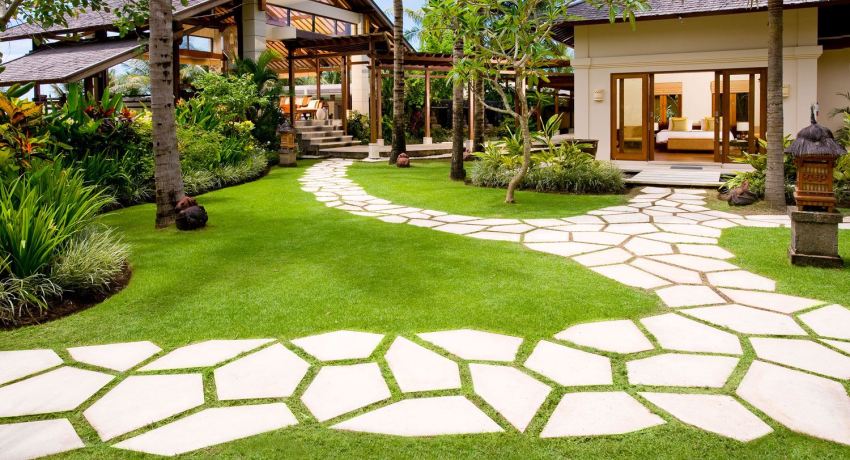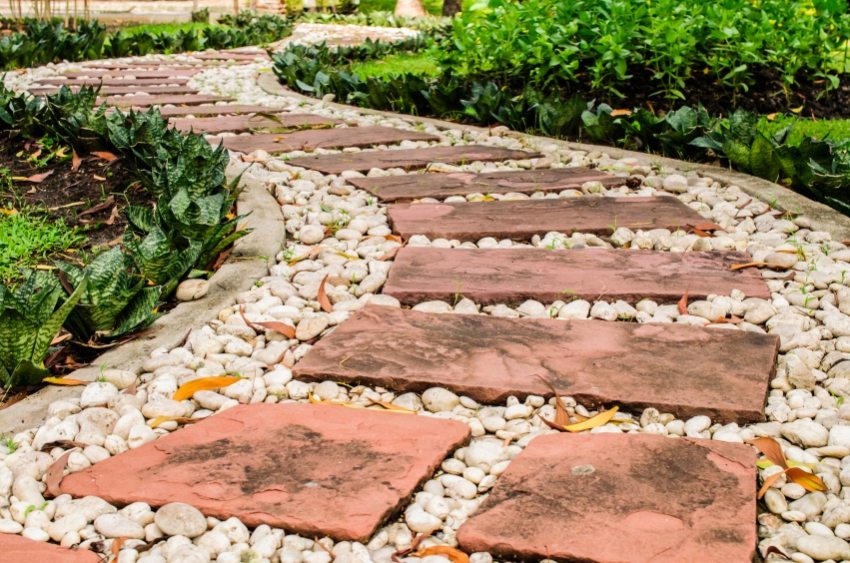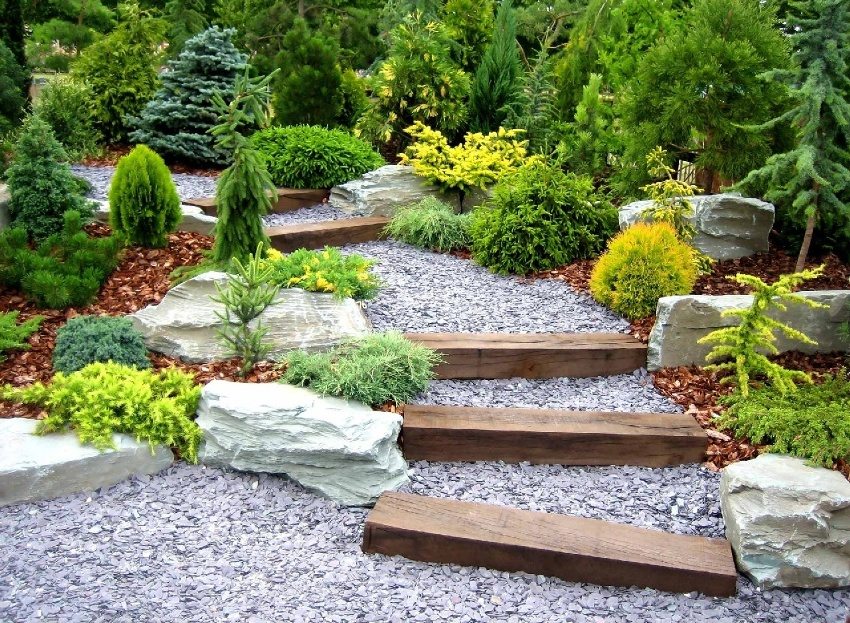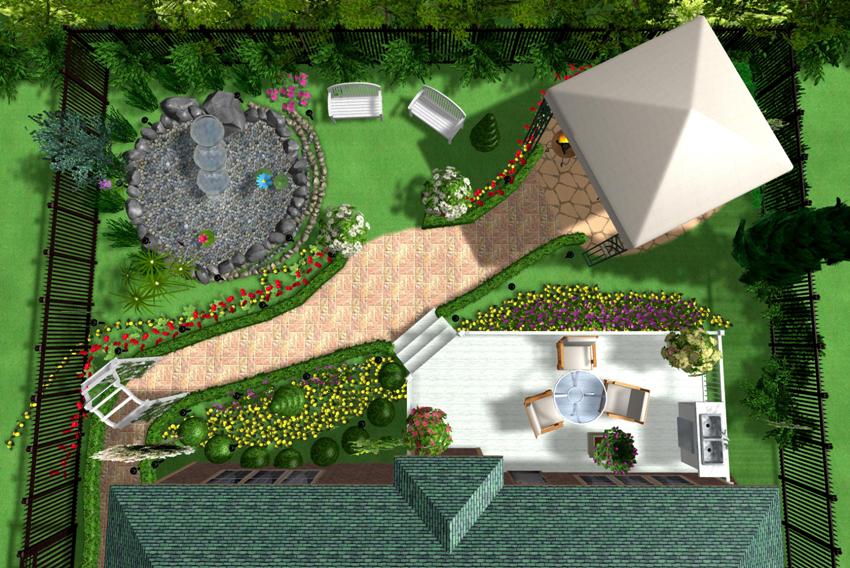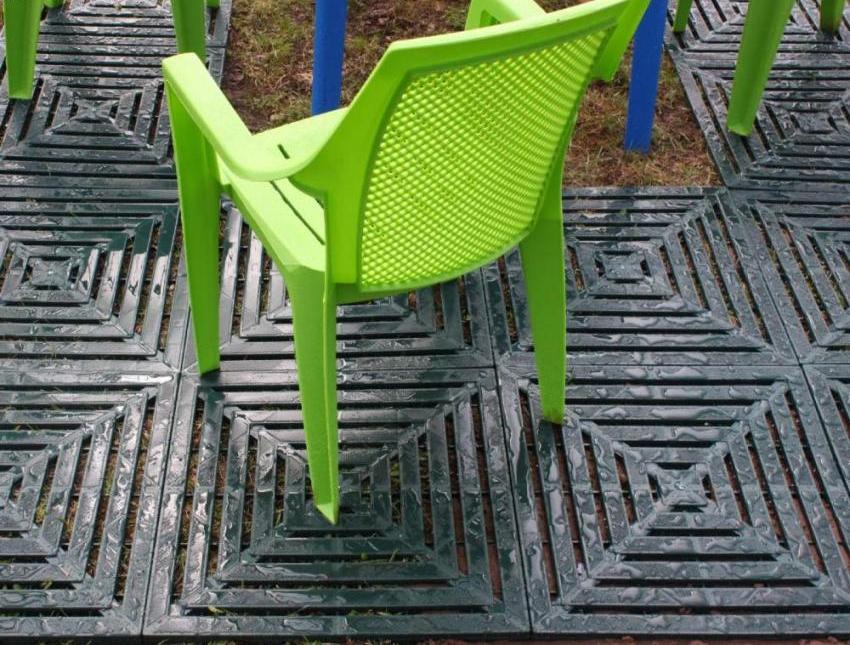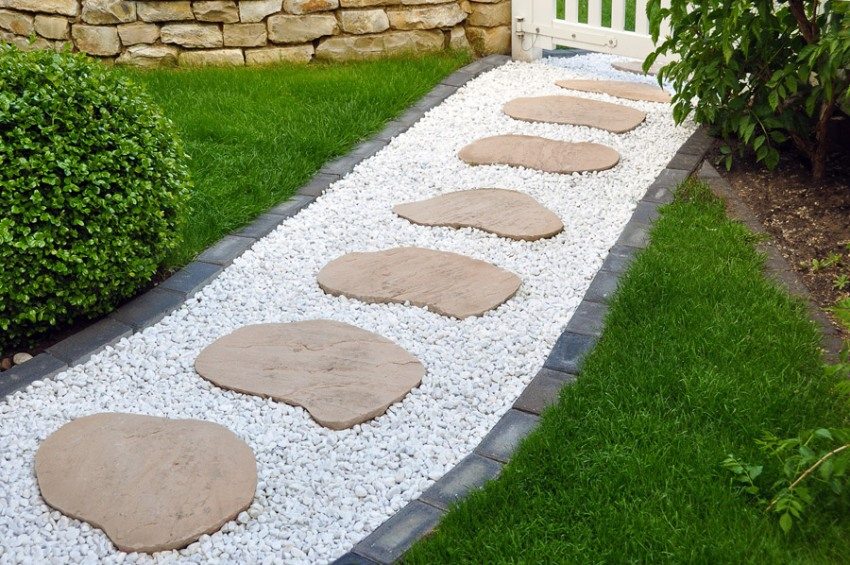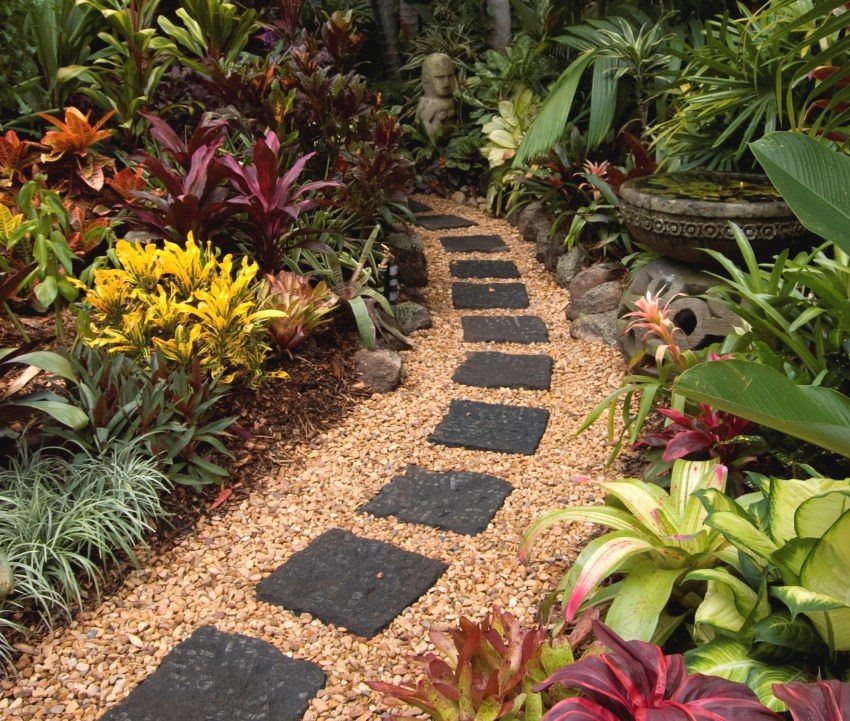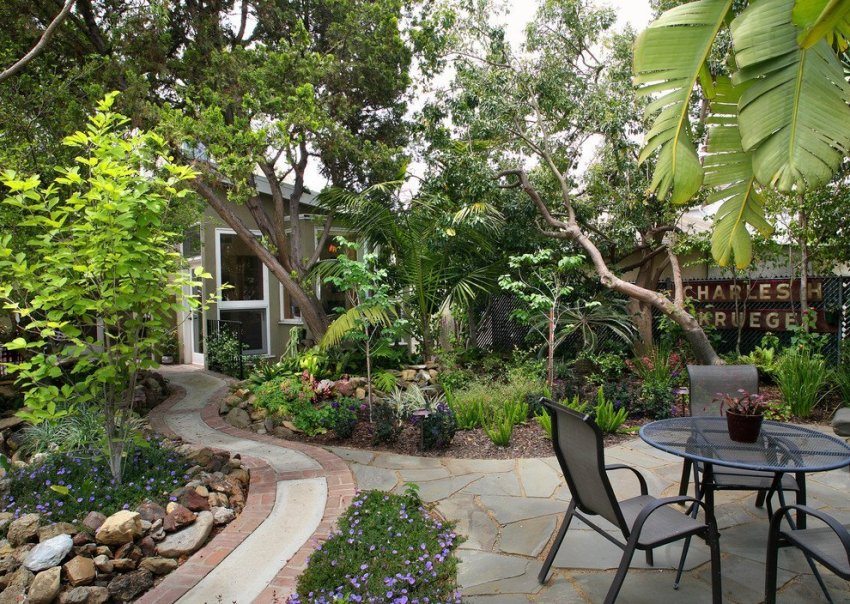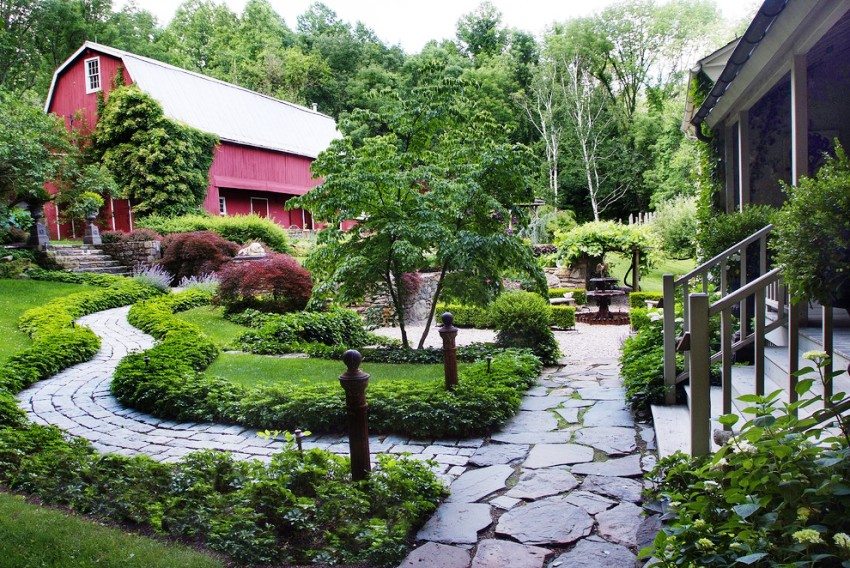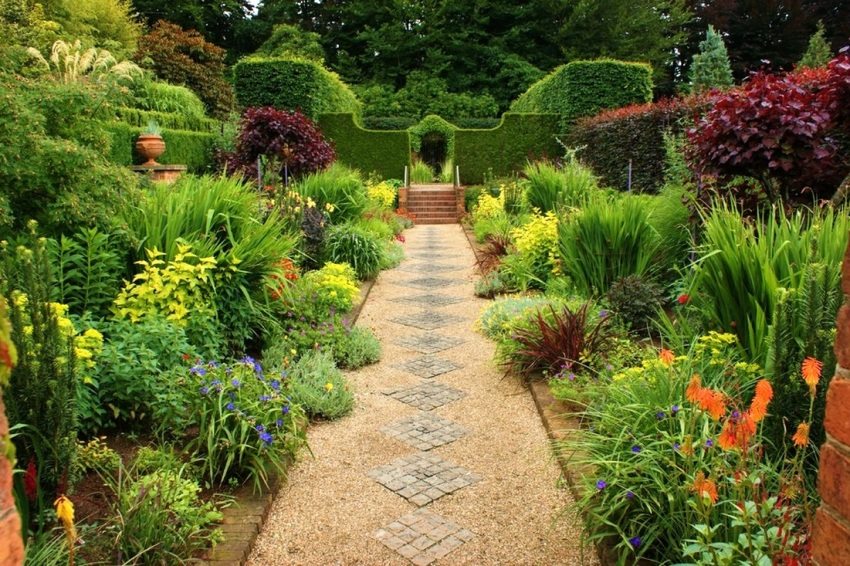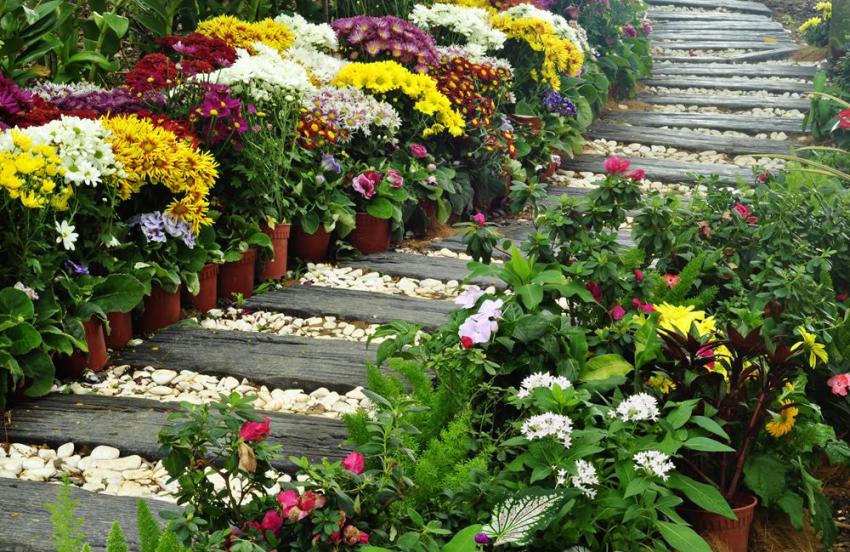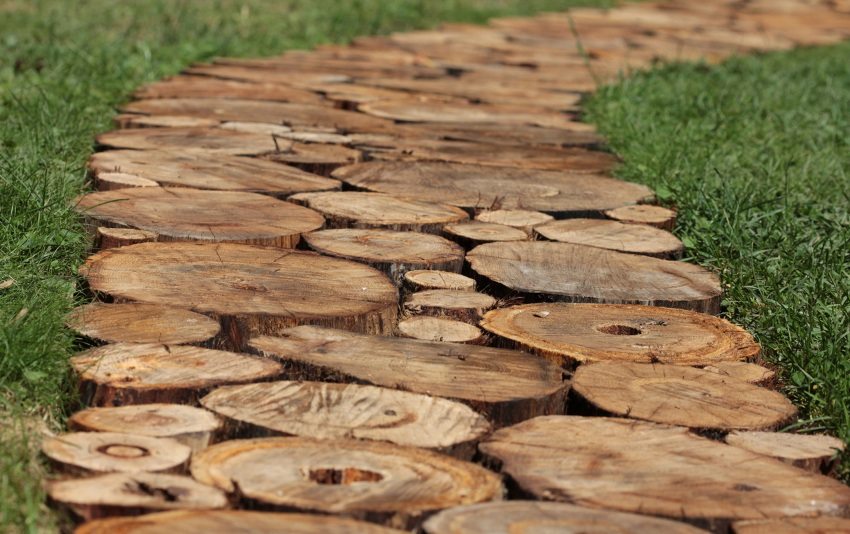To lay garden paths on your summer cottage with your own hands at low cost, you need to figure out what materials it is best to use. Landscape design involves many construction methods garden droshky... The style and choice of the type of material depends on the design that is chosen as a whole for the site. Regardless of the choice of material for the tracks, they should ideally fit into the panorama of your "estate" and not burden it with unnecessary high cost.
Content
What are the types of garden paths
There are three main purposes of the tracks at the summer cottage:
- practical - creating a comfortable and comfortable environment where it is safe to be. This factor makes it necessary to build paths where they are most needed for movement between objects and outbuildings. For the same purpose, the tracks are made between beds and trees. The choice of material depends on the actual purpose and frequency of use;
- operational - practicality should be at the head of the whole venture. Each track must be created from such material that guarantees its operation for the required period of time. For example, the central droshky, which serves as the main sidewalks, must be carried out for more than a dozen years, therefore, they require the use of durable materials. The paths between the beds are created for one season, so cheap materials can be used here, which can be dismantled in the fall.
There are quite practical and durable materials with an aesthetic appearance and expensive design: paving stone, natural stone, clinker or rubber tile other. All this is very good and beautiful. However, most people want to make garden paths with their own hands on their piece of land at low cost. What types of materials are best suited for this, read on.
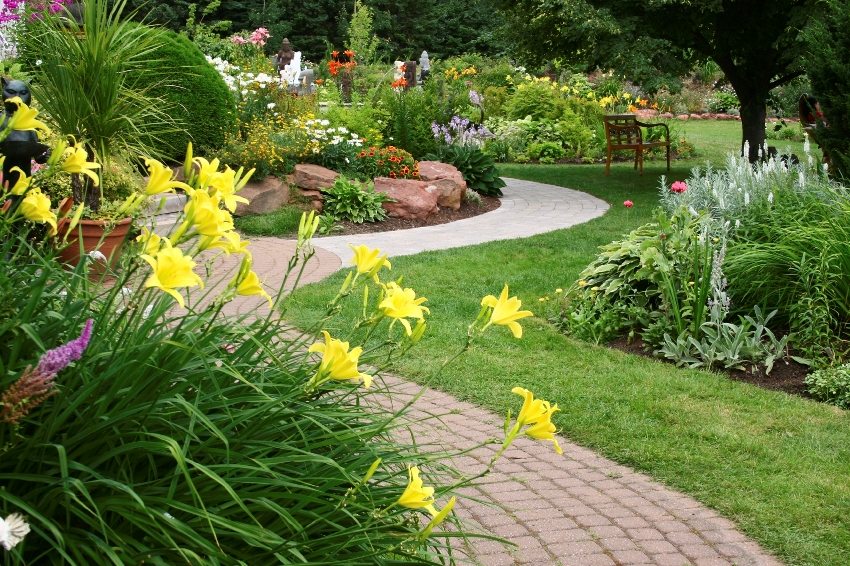
Track from paving slabs
Helpful advice! If, when choosing material for garden paths, we are guided only by the economic component, you can build an object that will not last even a season. Therefore, you must always weigh the feasibility and cost.For example, it is impractical to lay paths from plastic bottles where there is heavy traffic.
DIY garden paths at low cost
When conducting even a superficial analysis of the cost of certain types of materials from which it is customary to make garden paths, one can come to the conclusion that paths made of marble chips, crushed stone and gravel are considered the cheapest and most practical. It is not difficult to create them, and the performance will not disappoint anyone.
Brick, both solid and broken, can be successfully used for the budget construction of paths on the site. It's good if you don't need to buy it specifically for this purpose. Perhaps he was left behind during the dismantling of an old stove or some kind of structure. Wooden hemp is an original and low-cost way of laying garden paths. The same can be said about plastic bottles, which can be collected as much as you want.
The next material that does not require large costs for installation is concrete. It is strong enough, practical and durable. If you use dyes, then you can make noteworthy tracks from it. Moreover, for some time now, various forms for the manufacture of garden paths have appeared on sale.
Related article:
Geotextile: what it is and how it is used in construction. Types of geotextiles and their features, advantages of use, styling. How does the density of geotextiles affect its application?
How to build a path from rubble or gravel
Clastic material is not expensive, especially in places where it is abundant in nature itself. Therefore, the construction of tracks from it can be attributed to low-cost forms. Let's figure out how to lay a path from rubble or gravel. This is not at all difficult to do. Before starting work, you need to stock up on the right amount of debris, sand and cement. Crushed stone, gravel, stone chips, and even brick fragments will do.
On the site, it is necessary to mark the contours of the future track. If your garden is arranged in a classic style, then the paths should be made straight and it is better to use curbs. The landscape style, by contrast, involves curvilinear shapes with natural obstacle avoidance. Along the entire contour, the soil and sod are excavated to a solid foundation. The amount of material that will be needed to fill it depends on the depth of the resulting trench.
At the bottom of the dug trench, place sand a layer thickness of 5 cm. It is carefully tamped. Then a layer of rubble is poured onto the sand, at least 7 - 10 cm. They try to tamp this layer into the sand, as tightly as possible. When a relatively flat surface is obtained, the gaps between the rubble are filled with a concrete solution. The resulting canvas remains dry for 7 to 10 days.
Helpful advice! To make the crushed stone path look more aesthetically pleasing and not creep out over time, you need to use a border. For this purpose, old concrete stepsons from electrical poles, steel or plastic poles, bricks and many other items are suitable.
Brick paths - a budget option for a solid path
You can arrange an inexpensive brick path as follows. We need old, but not cracked brick in a large enough amount. The brick is laid in two ways: on a plane and on an edge. The second option requires more bricks, but it is more reliable. You can create a very original pattern by combining red and white brick.
In the prepared trench, we arrange a sand cushion, which we compactly tamp and pour with water. When the sand settles well, we begin to lay the bricks. This can be done in different patterns: a cross on a cross, a herringbone, a snake or a zigzag. You can create an ornament from bricks of different colors.
First, one row of several bricks is laid. To align them, use a rubber mallet and an ordinary board, which is placed on the entire row and level it. When laying subsequent rows, they are guided by the first. After the required section has been laid, the bricks are bonded. To do this, prepare a dry mixture of sand and cement in a ratio of 3: 1. The finished composition is poured onto the track and scattered with a brush so that all the seams between the bricks are filled. After that, the path is slightly watered with water from a spray bottle.
Walkways made of wood and other unexpected materials
The construction of garden paths with your own hands at low cost can be done using completely waste material. An example is paths made from tree cuts. For their manufacture, logs are sawn into stumps with a height of 10 - 15 cm. The workpieces are treated with any antiseptic so that they can serve at least 3 - 4 years.
Then a pit is prepared for the path. For this, the sod is removed and sand is poured, which is rammed. Stumps are installed close to each other or at some distance. The gaps are covered with sand or fine gravel.
Paths laid with a mold for making garden paths
Concrete is a very strong and quite durable material. However, its gray dull color is not always pleasing. Therefore, in order to avoid monotony, it is recommended to add colors of various colors to the solution when making concrete tracks. Concrete paths can be monolithic, which are made like a conventional screed with the addition of reinforcement.
However, a more advanced method is to make concrete paths using a garden path mold. They are produced in plastic or silicone.
To make a beautiful and modern track, it is enough to install one or several molds in a line and fill them with a solution. After a few hours, the molds are moved further and the next section is poured. Paths built in such an original and convenient way look so presentable, as if they were made of expensive ceramic tiles, if you add dye to the composition.
Whatever option for making garden paths with your own hands at low cost was chosen, the main thing is that the resulting object fits perfectly into the design of your site, is practical, and a minimum of funds were spent on its device.
DIY garden path (video)
